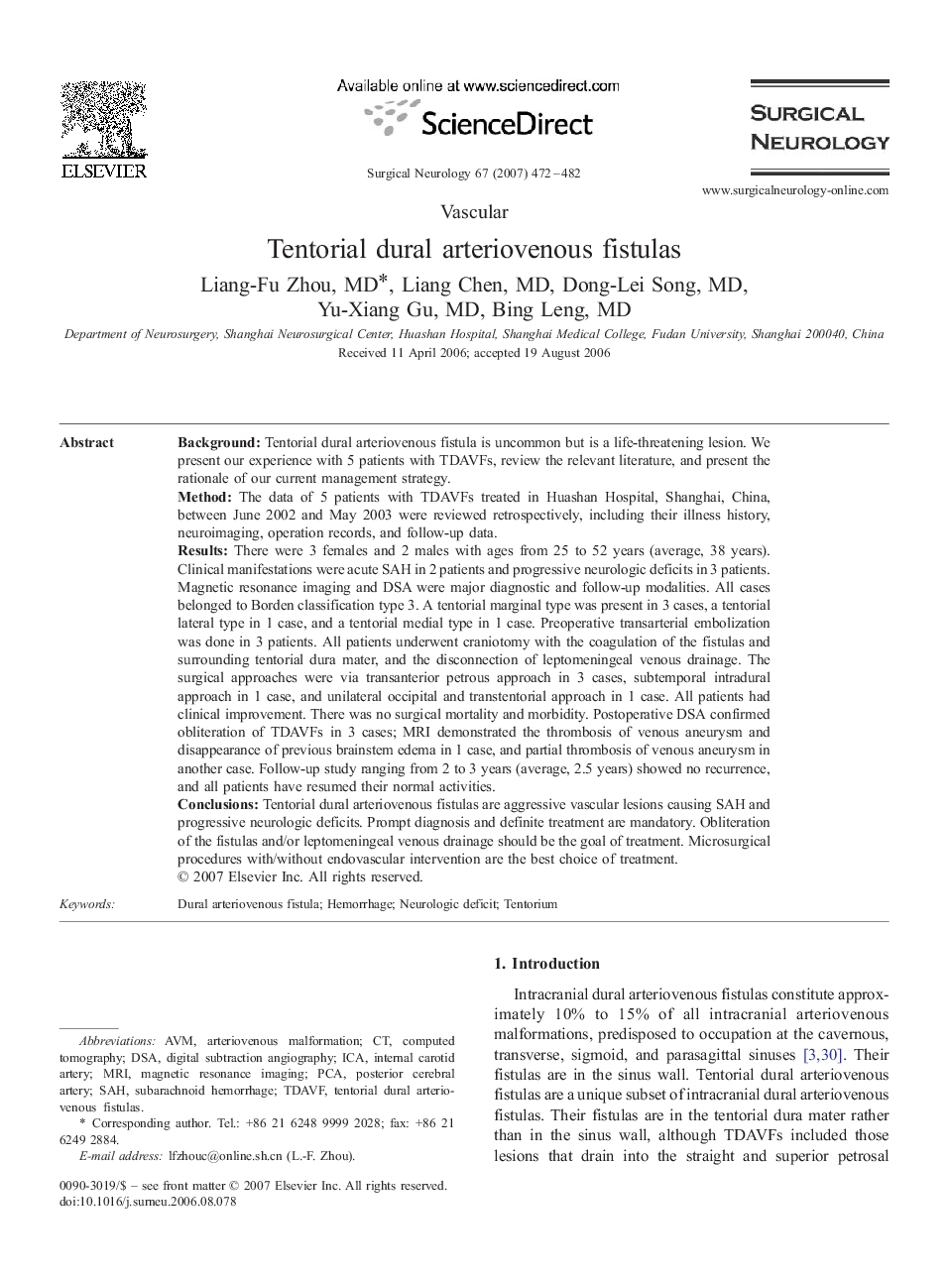| کد مقاله | کد نشریه | سال انتشار | مقاله انگلیسی | نسخه تمام متن |
|---|---|---|---|---|
| 3093648 | 1190542 | 2007 | 10 صفحه PDF | دانلود رایگان |

BackgroundTentorial dural arteriovenous fistula is uncommon but is a life-threatening lesion. We present our experience with 5 patients with TDAVFs, review the relevant literature, and present the rationale of our current management strategy.MethodThe data of 5 patients with TDAVFs treated in Huashan Hospital, Shanghai, China, between June 2002 and May 2003 were reviewed retrospectively, including their illness history, neuroimaging, operation records, and follow-up data.ResultsThere were 3 females and 2 males with ages from 25 to 52 years (average, 38 years). Clinical manifestations were acute SAH in 2 patients and progressive neurologic deficits in 3 patients. Magnetic resonance imaging and DSA were major diagnostic and follow-up modalities. All cases belonged to Borden classification type 3. A tentorial marginal type was present in 3 cases, a tentorial lateral type in 1 case, and a tentorial medial type in 1 case. Preoperative transarterial embolization was done in 3 patients. All patients underwent craniotomy with the coagulation of the fistulas and surrounding tentorial dura mater, and the disconnection of leptomeningeal venous drainage. The surgical approaches were via transanterior petrous approach in 3 cases, subtemporal intradural approach in 1 case, and unilateral occipital and transtentorial approach in 1 case. All patients had clinical improvement. There was no surgical mortality and morbidity. Postoperative DSA confirmed obliteration of TDAVFs in 3 cases; MRI demonstrated the thrombosis of venous aneurysm and disappearance of previous brainstem edema in 1 case, and partial thrombosis of venous aneurysm in another case. Follow-up study ranging from 2 to 3 years (average, 2.5 years) showed no recurrence, and all patients have resumed their normal activities.ConclusionsTentorial dural arteriovenous fistulas are aggressive vascular lesions causing SAH and progressive neurologic deficits. Prompt diagnosis and definite treatment are mandatory. Obliteration of the fistulas and/or leptomeningeal venous drainage should be the goal of treatment. Microsurgical procedures with/without endovascular intervention are the best choice of treatment.
Journal: Surgical Neurology - Volume 67, Issue 5, May 2007, Pages 472–481